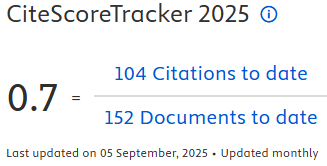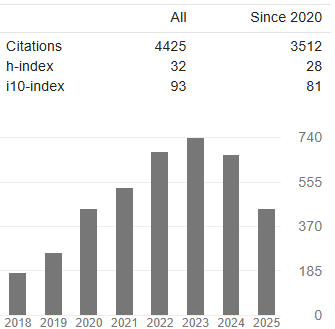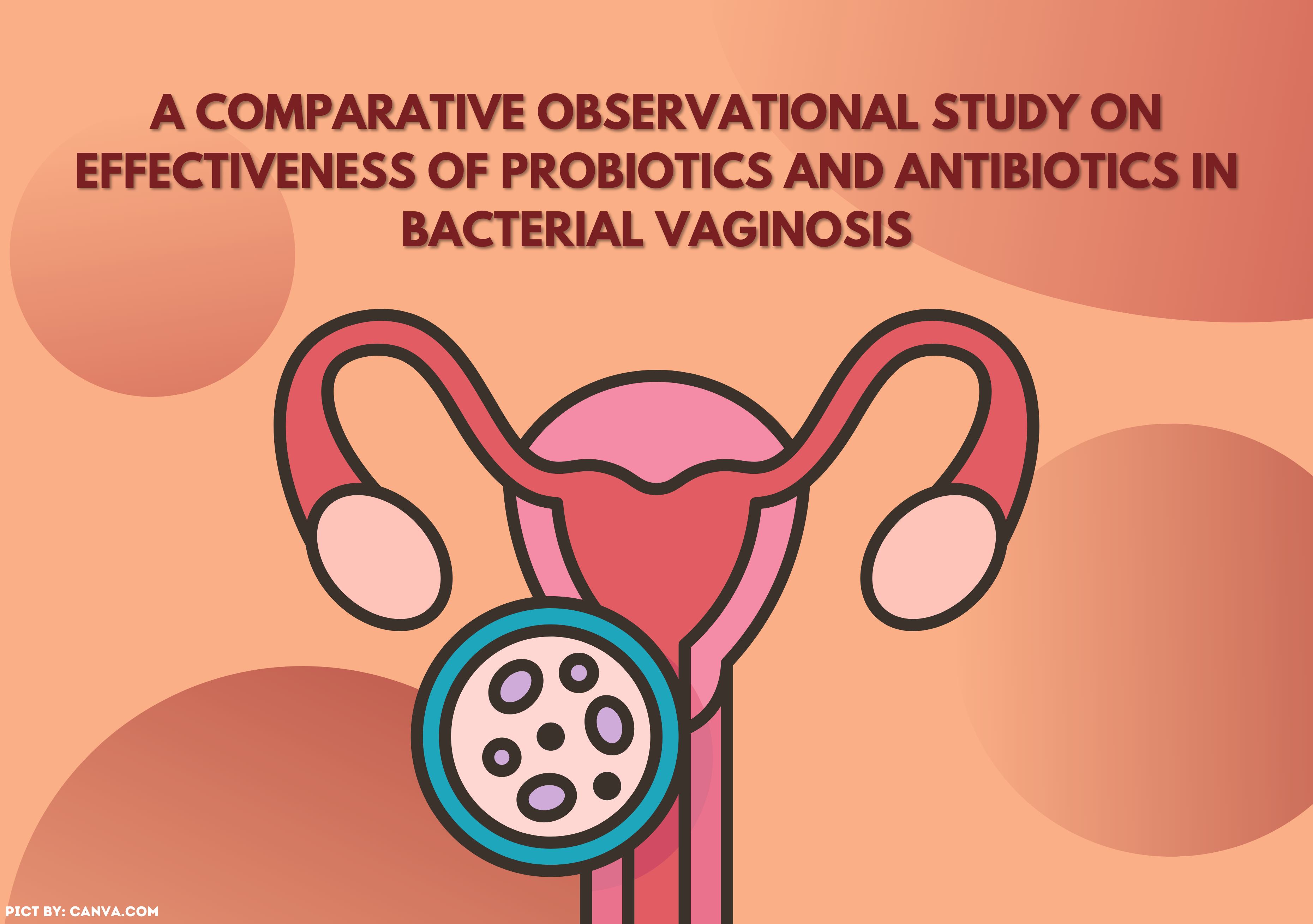OVERWEIGHT IN SCHOOL-AGE CHILDREN AND ITS RISK FACTORS

Introduction: According to data from the Basic Health Research in 2018, the prevalence of overweight and obesity among children in East Java Province was 24.27%. This prevalence is still higher than the national average. Aims: This study aims to analyze the risk factors for overweight in school-age children in Tawangsari Village, Sidoarjo Regency, East Java Province. Methods: This study used a case-control design and involved 132 school-age children at 1 and 3 Tawangsari State Elementary Schools, Sidoarjo Regency. The respondents were divided into two groups, namely case and control. The data were analyzed using multiple logistic regression with a significance level at 0.05. Result: The results of the multivariate analysis suggested that sedentary behavior (p = 0.002; Exp(B) = 8.340), sugar intake (p = 0.000; Exp(B) = 9.125) and vegetable and fruit intake (p = 0.007; Exp(B) = 20.643) were significant variables (p < 0.05). Conclusion: School-age children with low levels of physical activity were found to be 8.34 times more likely to be overweight compared to those with high levels of physical activity. In addition, excessive sugar intake and inadequate consumption of vegetable and fruit were associated with a higher likelihood of being overweight in school-age children. However, dietary diversity is not a risk factor for overweight in school-aged children.
Calcaterra, V., Cena, H., Magenes, V.C., Vincenti, A., Comola, G., Beretta, A., Di Napoli, I. and Zuccotti, G., 2023. Sugar-Sweetened Beverages and Metabolic Risk in Children and Adolescents with Obesity: A Narrative Review. Nutrients, 15(3), p.702. https://doi.org/10.3390/nu15030702
Champagne, C.M., Broyles, S.T., Moran, L.D., Cash, K.C., Levy, E.J., Lin, P.-H., Batch, B.C., Lien, L.F., Funk, K.L., Dalcin, A., Loria, C. and Myers, V.H., 2011. Dietary Intakes Associated with Successful Weight Loss and Maintenance during the Weight Loss Maintenance Trial. Journal of the American Dietetic Association, 111(12), pp.1826–1835. https://doi.org/10.1016/j.jada.2011.09.014
FAO, 2011. Guidelines for measuring household and individual dietary diversity.
FAO, 2018. Dietary Assessment A resource guide to method selection and application in low resource settings. Rome.
Fernandez, C., Kasper, N.M., Miller, A.L., Lumeng, J.C. and Peterson, K.E., 2016. Association of Dietary Variety and Diversity With Body Mass Index in US Preschool Children. Pediatrics, 137(3). https://doi.org/10.1542/peds.2015-2307
Gebrie, A., Alebel, A., Zegeye, A., Tesfaye, B. and Ferede, A., 2018. Prevalence and associated factors of overweight/ obesity among children and adolescents in Ethiopia: a systematic review and meta-analysis. BMC Obesity, 5(1), p.19. https://doi.org/10.1186/s40608-018-0198-0.
Gerritsen, S., Renker-Darby, A., Harré, S., Rees, D., Raroa, D.A., Eickstaedt, M., Sushil, Z., Allan, K., Bartos, A.E., Waterlander, W.E. and Swinburn, B., 2019. Improving low fruit and vegetable intake in children: Findings from a system dynamics, community group model
building study. PLOS ONE, 14(8), p.e0221107. https://doi.org/10.1371/journal.pone.0221107
Guan, H., Zhang, Z., Wang, B., Okely, A.D., Tong, M., Wu, J. and Zhang, T., 2020. Proportion of kindergarten children meeting the WHO guidelines on physical activity, sedentary behaviour and sleep and associations with adiposity in urban Beijing. BMC Pediatrics, 20(1). https://doi.org/10.1186/s12887-020-1969-6.
Healy, G.N., Dunstan, D.W., Salmon, J., Cerin, E., Shaw, J.E., Zimmet, P.Z. and Owen, N., 2007. Objectively Measured Light-Intensity Physical Activity Is Independently Associated With 2-h Plasma Glucose. Diabetes Care, 30(6), pp.1384–1389. https://doi.org/10.2337/dc07-0114
Hu, F.B., 2003. Sedentary lifestyle and risk of obesity and type 2 diabetes. Lipids, 38(2), pp.103–108. https://doi.org/10.1007/s11745-003-1038-4.
Kowalski, K.C., Crocker, P.R.E. and Donen, R.M., 2004. The Physical Activity Questionnaire for Older Children (PAQ-C) and Adolescents (PAQ-A) Manual . Kanada.
Ledoux, T.A., Hingle, M.D. and Baranowski, T., 2011. Relationship of fruit and vegetable intake with adiposity: a systematic review. Obesity Reviews, 12(5), pp.e143–e150. https://doi.org/10.1111/j.1467-789X.2010.00786.x
Lee, E.Y. and Yoon, K.H., 2018. Epidemic obesity in children and adolescents: risk factors and prevention. Frontiers of Medicine, https://doi.org/10.1007/s11684-018-0640-1
Magriplis, E., Michas, G., Petridi, E., Chrousos, G.P., Roma, E., Benetou, V., Cholopoulos, N., Micha, R., Panagiotakos, D. and Zampelas, A., 2021. Dietary Sugar Intake and Its Association with Obesity in Children and Adolescents. Children, 8(8), p.676. https://doi.org/10.3390/children8080676
Ministry of Health Republik Indonesia, 2018. Basic Health Research. Jakarta.
Mitchell, J.A., Mattocks, C., Ness, A.R., Leary, S.D., Pate, R.R., Dowda, M., Blair, S.N. and Riddoch, C., 2009. Sedentary Behavior and Obesity in a Large Cohort of Children. Obesity, 17(8), pp.1596–1602. https://doi.org/10.1038/oby.2009.42
Mohajeri, M., Hoojeghani, S., Pourfarzi, F., Ghahremanzadeh, M. and Barzegar, A., 2020. Association between dietary diversity and obesity in Ardebil adults: a case-control study. Nutrition and Food Science, 50(3), pp.555–567. https://doi.org/10.1108/NFS-04-2019-0118.
Paduano, S., Greco, A., Borsari, L., Salvia, C., Tancredi, S., Pinca, J., Midili, S., Tripodi, A., Borella, P. and Marchesi, I., 2021. Physical and Sedentary Activities and Childhood Overweight/Obesity: A Cross-Sectional Study among First-Year Children of Primary Schools in Modena, Italy. International Journal of Environmental Research and Public Health, 18(6), p.3221. https://doi.org/10.3390/ijerph18063221.
Pramudji Hastuti, 2019. Genetika obesitas. UGM Press.
Salehi-Abargouei, A., Akbari, F., Bellissimo, N. and Azadbakht, L., 2016. Dietary diversity score and obesity: a systematic review and meta-analysis of observational studies. European Journal of Clinical Nutrition, 70(1), pp.1–9. https://doi.org/10.1038/ejcn.2015.118
Shah, B., Tombeau Cost, K., Fuller, A., Birken, C.S. and Anderson, L.N., 2020. Sex and gender differences in childhood obesity: contributing to the research agenda. BMJ Nutrition, Prevention & Health, 3(2), pp.387–390. https://doi.org/10.1136/bmjnph-2020-000074
Spiegel, S.A. and Foulk, D., 2006. Reducing Overweight through a Multidisciplinary School-based Intervention*. Obesity, 14(1), pp.88–96. https://doi.org/10.1038/oby.2006.11
Spinelli, A., Buoncristiano, M., Kovacs, V.A., Yngve, A., Spiroski, I., Obreja, G., Starc, G., Pérez, N., Rito, A.I., KuneÅ¡ová, M., Sant'Angelo, V.F., Meisfjord, J., Bergh, I.H., Kelleher, C., Yardim, N., Pudule, I., Petrauskiene, A., Duleva, V., Sjöberg, A., Gualtieri, A., Hassapidou, M., Hyska, J., Burazeri, G., Petrescu, C.H., Heinen, M., Takacs, H., Zamrazilová, H., Bosi, T.B., Sacchini, E., Pagkalos, I., Cucu, A., Nardone, P.,
Gately, P., Williams, J. and Breda, J., 2019. Prevalence of severe obesity among primary school children in 21 European countries. Obesity Facts, 12(2), pp.244–258. https://doi.org/10.1159/000500436
Tao, C., Zhao, Q., Glauben, T. and Ren, Y., 2020. Does Dietary Diversity Reduce the Risk of Obesity? Empirical Evidence from Rural School Children in China. International Journal of Environmental Research and Public Health, 17(21), p.8122. https://doi.org/10.3390/ijerph17218122.
Turel, O., Romashkin, A. and Morrison, K.M., 2017. A model linking video gaming, sleep quality, sweet drinks consumption and obesity among children and youth. Clinical Obesity, 7(4), pp.191–198. https://doi.org/10.1111/cob.12191.
Wang, V.H., Min, J., Xue, H., Du, S., Xu, F., Wang, H. and Wang, Y., 2018. What factors may contribute to sex differences in childhood obesity prevalence in China? Public Health Nutrition, 21(11), pp.2056–2064. https://doi.org/10.1017/S1368980018000290
WHO, 2019. Healthy Diet.
WHO, 2020. Who guidelines on physical activity and sedentary behaviour.
Zhao, W., Yu, K., Tan, S., Zheng, Y., Zhao, A., Wang, P. and Zhang, Y., 2017. Dietary diversity scores: an indicator of micronutrient inadequacy instead of obesity for Chinese children. BMC Public Health, 17(1), p.440. https://doi.org/10.1186/s12889-017-4381-x
Copyright (c) 2024 The Indonesian Journal of Public Health

This work is licensed under a Creative Commons Attribution-NonCommercial-ShareAlike 4.0 International License.
- The authors agree to transfer the transfer copyright of the article to The Indonesian Journal of Public Health effective if and when the paper is accepted for publication.
- Authors and other parties are bound to the Creative Commons Attribution-NonCommercial-ShareAlike 4.0 International License for the published articles, legal formal aspect of journal publication accessibility refers to Creative Commons Attribution-NonCommercial-ShareAlike 4.0 International License (CC BY-NC-SA), implies that:
- Attribution ” You must give appropriate credit, provide a link to the license, and indicate if changes were made. You may do so in any reasonable manner, but not in any way that suggests the licensor endorses you or your use.
- NonCommercial ” You may not use the material for commercial purposes.
- ShareAlike ” If you remix, transform, or build upon the material, you must distribute your contributions under the same license as the original.































